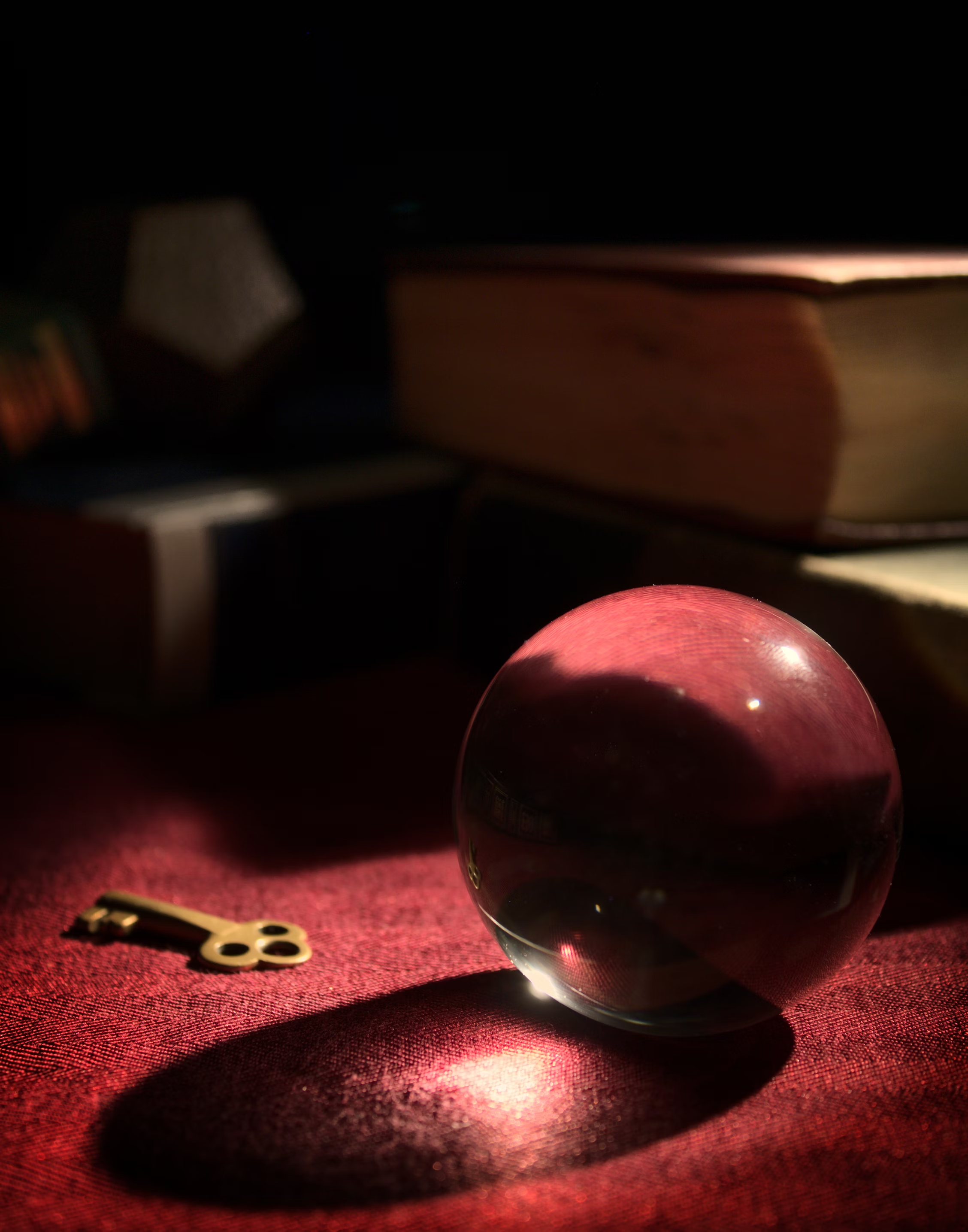Reflections on successful business/design relationships
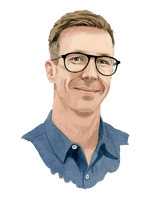 Chuck Moore
5 min read
Chuck Moore
5 min read
We recently conducted a new 2-day workshop at our studio for a group of 15 business leaders and designers. It was an opportunity to expose a diverse group of people to lessons we’ve learned that would help them work more effectively together. We had a great time, learned a lot from the great feedback, and validated the concept as important for teams to improve.
To take a step back for a moment, let me provide a bit of an origin story to the reason for this workshop. It’s pretty rare (maybe non-existent?) to find a workshop that is targeted to two different disciplines around the same content. But in chats with Audrey Crane, one of the other Partners here, the excitement we shared around combining workshop material kept growing and ultimately spawned the agenda for the two days we’d share.
Previously our team conducted a 2-day workshop tailored to an internal UX design team which covered a number of topics all revolving around the 2 sides of who we are as designers equal parts consultants and user experience designers. Each brings it’s own special skillset that, when used together, help our clients reach their goals more quickly and result in better design outcomes.
Also Audrey recently conducted a workshop on What Business Leaders Need to Know About Design. In this she described the layers of design, the design process and how design-centric organizations are more valuable than those that don’t highly value design. There’s been a lot of research piling up about that which she boiled off in a concise way for the audience, in addition to giving them tools to better engage with design.
So for this workshop, we strove to create an experience that would have these 2 sides of the product design coin getting to know one another better and take away an appreciation of how to be better together.
Our inputs
DesignMap has been around for 11 years, and the leadership team here has been consulting in various ways for even longer, so we understand how design sometimes is challenging to fit into an organization. Oftentimes, maybe always, we help our clients get the most out of our relationship by providing our contacts with tools to foster design advocacy within the company. The results of this benefit both parties in many ways.
We’ve also been fortunate to have worked with some great clients, advocates for design within their organizations. We spent time interviewing each of them to learn about their tactics for elevating the position of design and working with designers effectively. From this we were able to synthesize their behaviors and attitudes into a memorable framework for constructing the workshop.

The Two Days
This workshop was a fair amount of new content for us because of integrating the business and design tracks so tightly. We couldn’t simply combine the individual previous workshops into something that would achieve our goals. Ultimately this approach made for a new, unique experience for the groups to learn about one another.
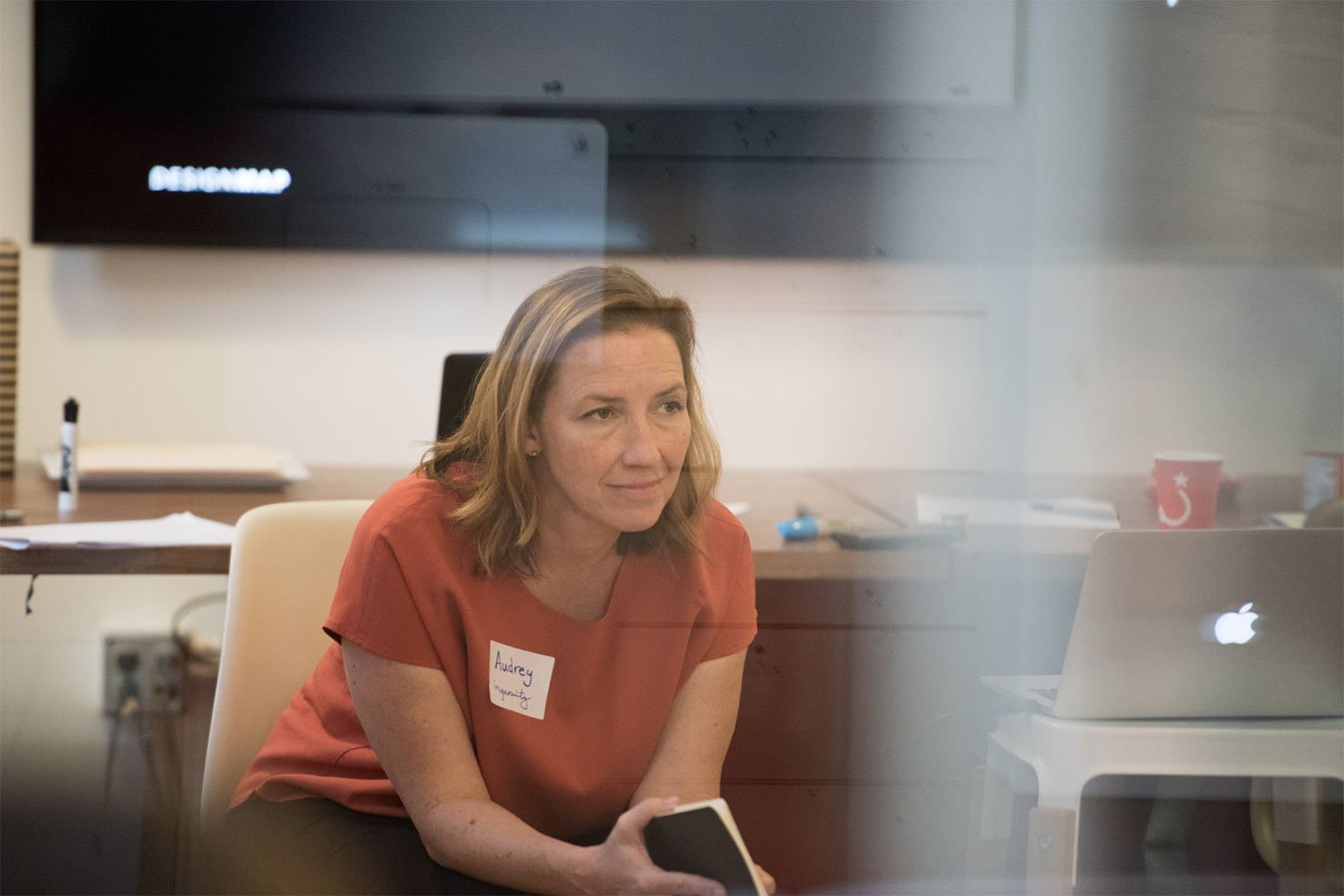
The 5 values
With the hypothesis in hand that the partnership between Business Leaders and Designers was critical, we set out to interview several of our former clients. Those that had a particular knack at bringing design into an organization in highly successful ways. Each brought different perspectives and lessons to the table that encompassed their philosophies around Design Advocacy in an enterprise. After synthesizing the interviews we uncovered five values that reflect the way successful product teams work.
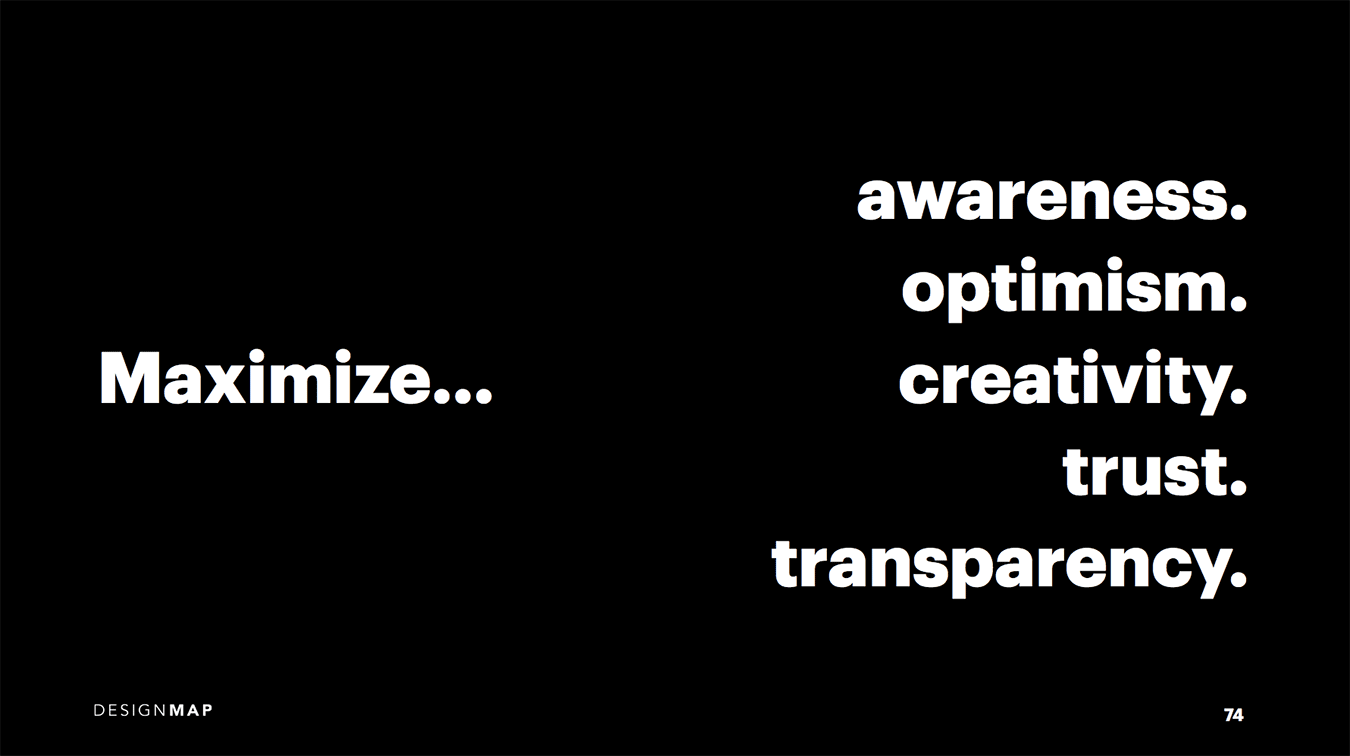
In our 2 day workshop, we were only able to dig deep into two of the five values: awareness and trust. We felt the need to give each time so that participants could absorb the underlying ideas of the activities more effectively. Of course, with more time, we would really want to cover all five so that attendees will be able to draw from all of the learnings to improve how they work.
Day 1: Awareness Focus
We started off with a bit of a grounding talk about our research, experience and factors that led to the creation of this workshop. Introductions and individual superpowers were determined to help everyone get to know where each was coming from, and then we shared a definition of design with the group that would play a role in how we presented content through the afternoon and into the next day.
Via activities in the afternoon, we spent time helping the group uncover pain points they had within their organization and with the other side of the table to get fears and expectations out for discussion. This included a rapid modeling exercise to draw out an understanding of the individual’s connections to the outside world, aka their product’s users.
Throughout the entire two days, we stopped frequently for reflection, comments, and “zoom out” moments that encouraged participants to think about how these lessons could be applied in different ways for their organization.
Day 2: Trust Focus
For day 2, we broke the attendees into 2 groups. Business leaders would learn about giving good feedback, heuristics, gestalt principles and the phases of the design process. Designers talked about where they spent most of their time in the product development process, constructing a rationale and presenting their work appropriately.
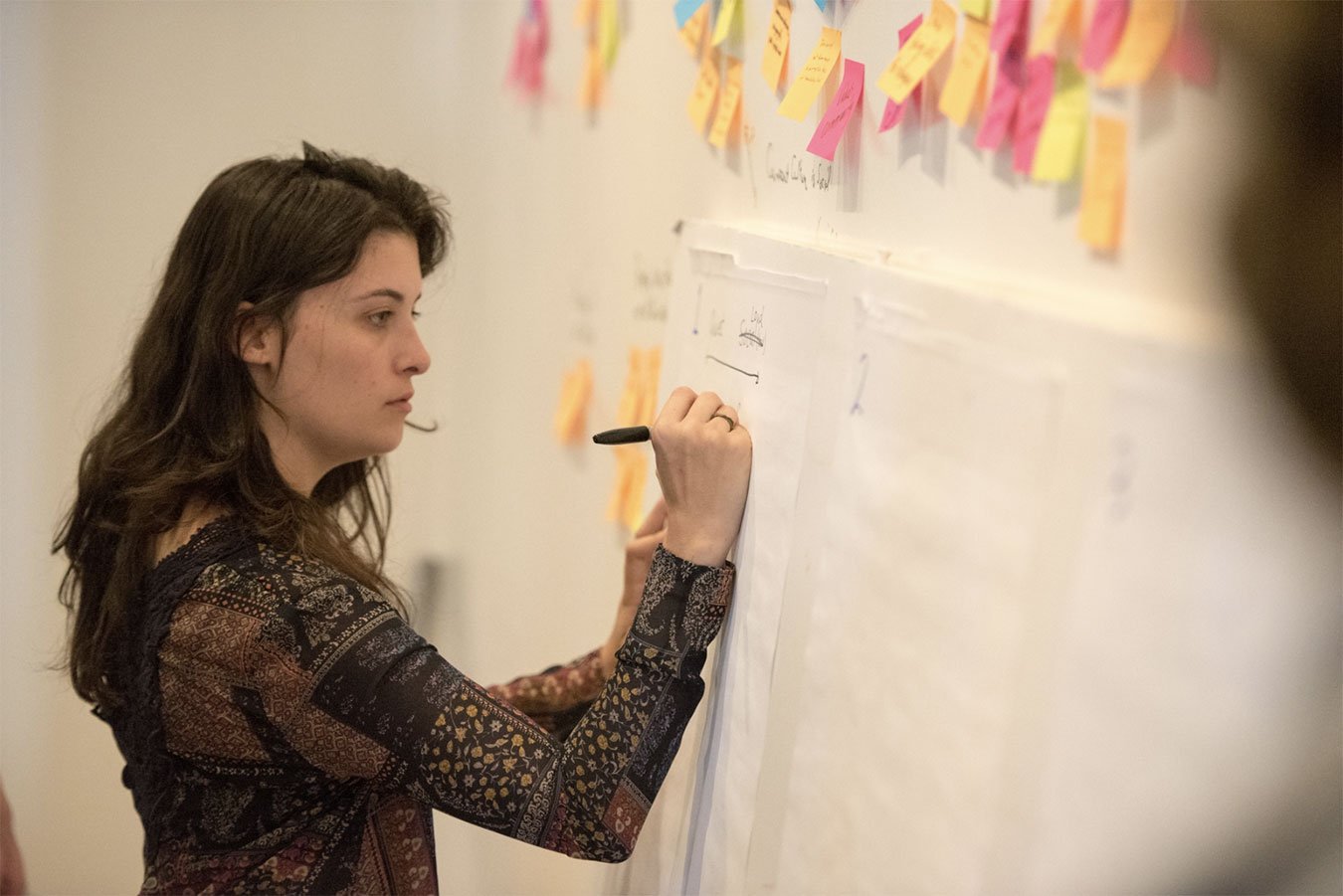
For business leaders, we have compiled a deck of user experience design tools that we leveraged and enhanced over the course of our 11 years (well longer because we started using these before banding together as DesignMap). The deck is organized around Jesse James Garrett’s model from “The Elements of User Experience Design”, but redrawn for our purposes.
Through this deck, we talk about each deliverable in the context of What You Have, What You Need, and What You Can Do. And in fact, that’s the key to our process: always move forward with what you have and partner with the client to get to the next step. We approached our conversation with the business leaders with a lens of “what kind of support and feedback is most valuable when”.
And in fact, there’s a non-designer version of this model that has been eye-opening for folks to get a sense of how each discipline interacts with one another.
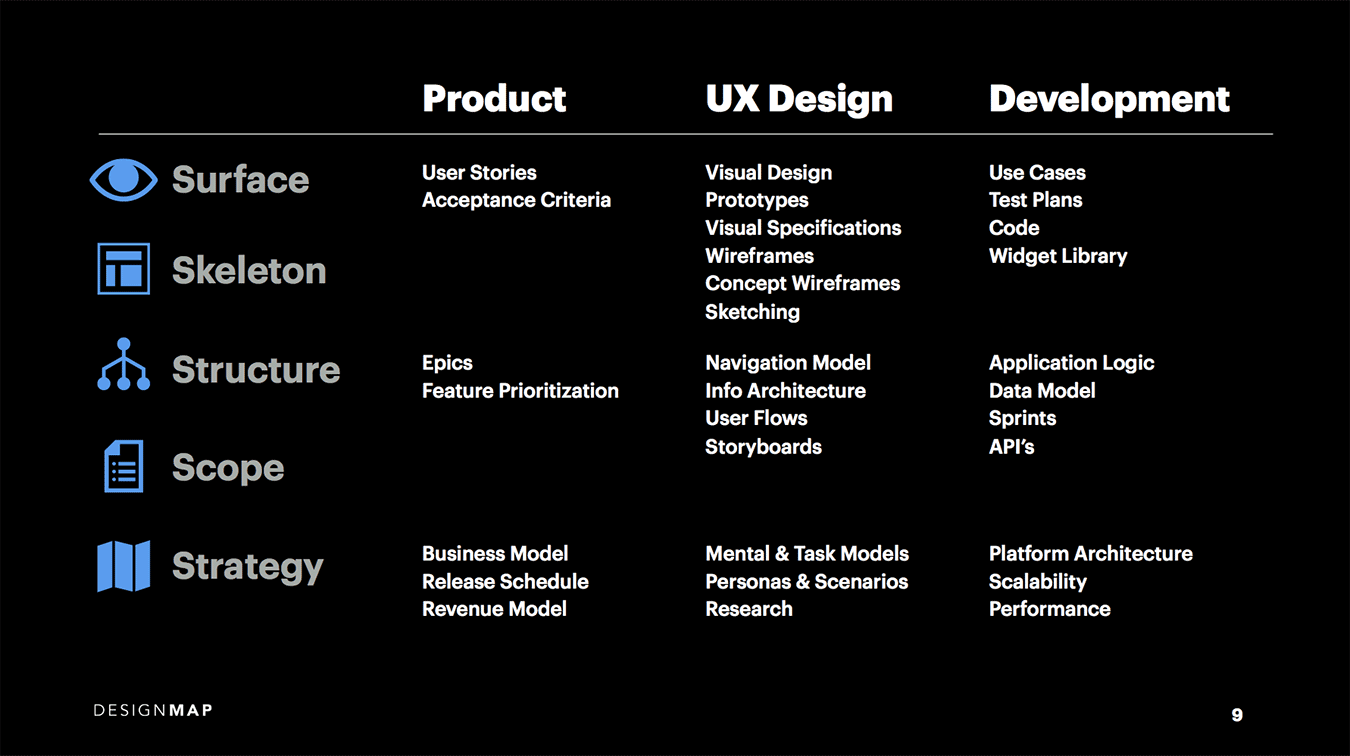
In addition to that context, we discussed heuristic principles with copious examples, the design process, and Edward de Bono’s Six Thinking Hats. The two groups came together for lunch to network and chat about their mornings and in the afternoon we jumped in with both feet to an accelerated “project” charrette, including research, brainstorming and presenting to a stakeholder.
The two groups came together for lunch to network and chat about their mornings and in the afternoon we jumped in with both feet to an accelerated “project” charrette, including research, brainstorming and presenting to a stakeholder.
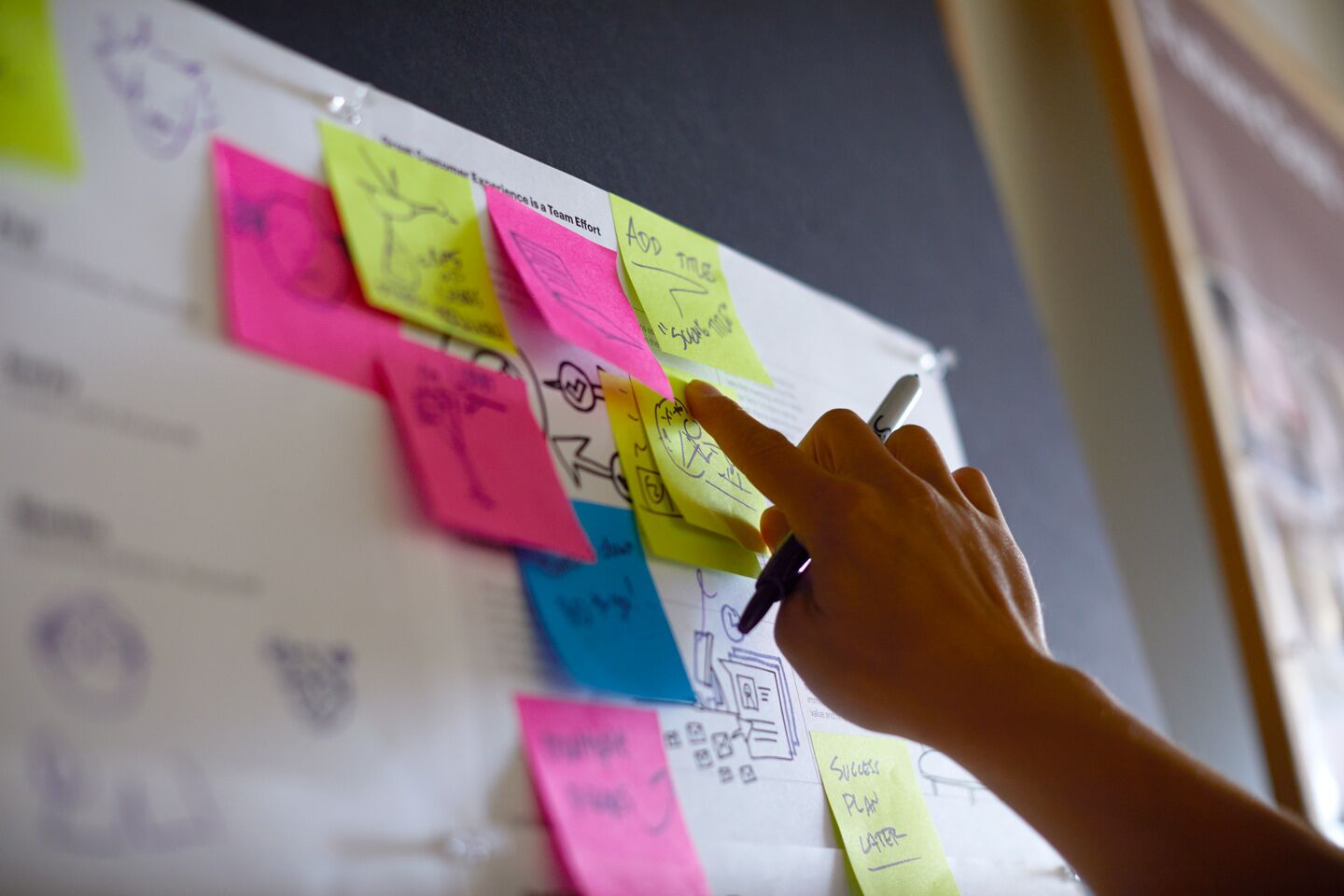
Each activity seemed to offer different lessons to different attendees based on experience and discipline.
The 5 Values
There is a lot more to say about each of these, but just so you aren’t completely in suspense, I’ve included the basic definitions of each of the values we discuss in the workshop. This workshop can definitely span almost a full week if a team was interested in working through each of them with relevant activities tailored to the organization.
Awareness: Maximize awareness of unseen forces that affect you by maximizing design’s ability to make the invisible visible.
Trust: Maximize trust in the process to bring order to the unknown by maximizing design’s rapid synthesis and pulse on the wild. A way to think about this is that trust is putting your faith in process over ideas.
Transparency: Maximize alignment through understanding by maximizing design’s regularly rendered footprints. So much of being a design consultant is sharing the evidence of your solutions, the trail you take to get to an answer.
Optimism: Maximize passion and vision that inspires action by maximizing design’s ability to connect making with meaning. Through optimism, we talk of communicating a vision of the business helps drive the team forward together.
Creativity: Maximize psychological safety and diversity by maximizing design’s playfulness and freedom from ego. We’ve discovered a lot about creativity. Optimizing an environment to encourage creativity results in more, and better, ideas.
If you are interested in participating in this or other workshops we run, let us know! We are currently finalizing details on our next workshop in early November and would love to have you be a part of it.

